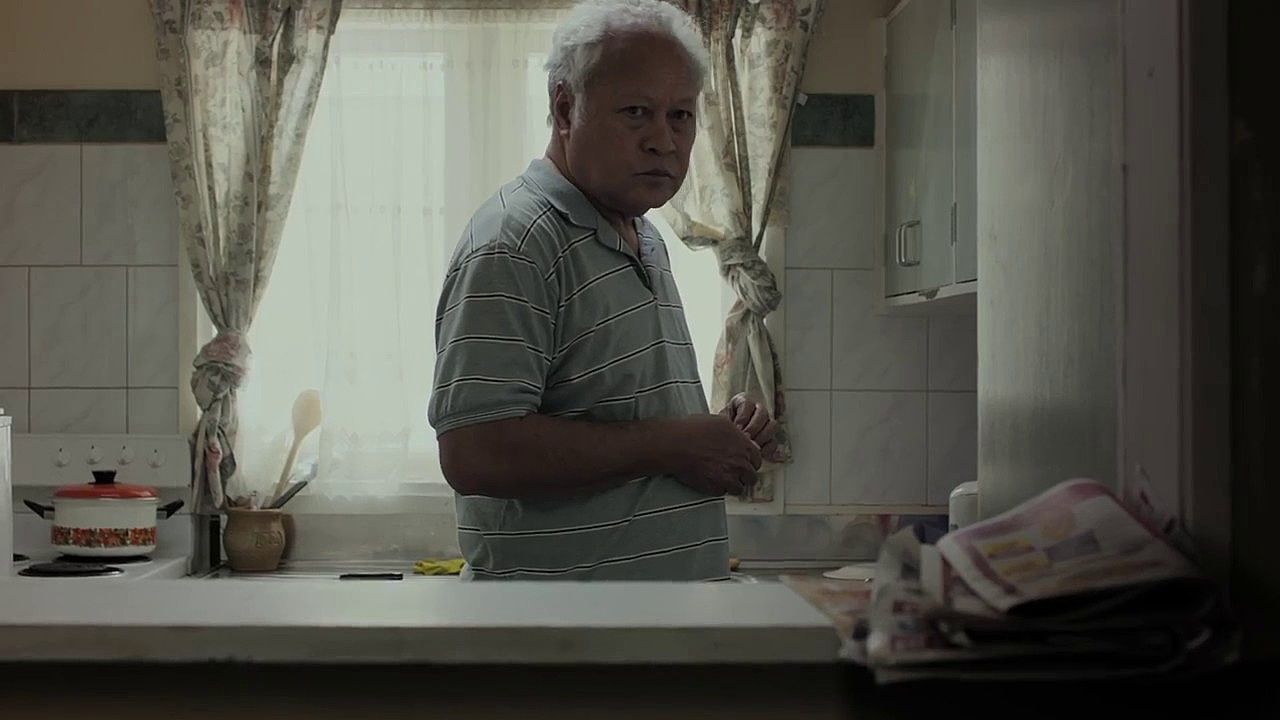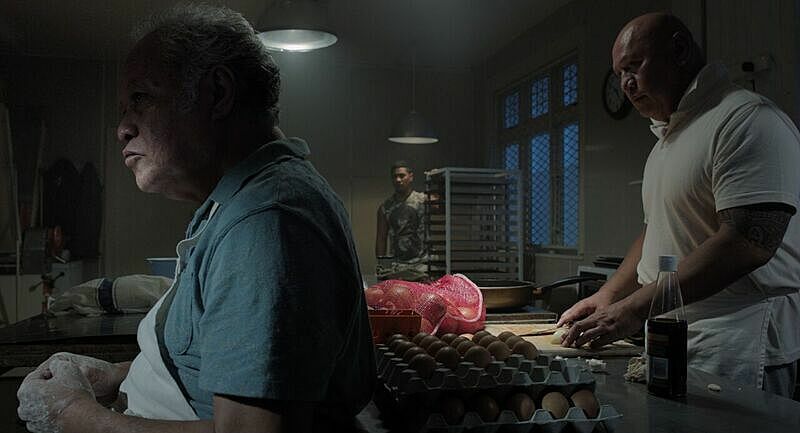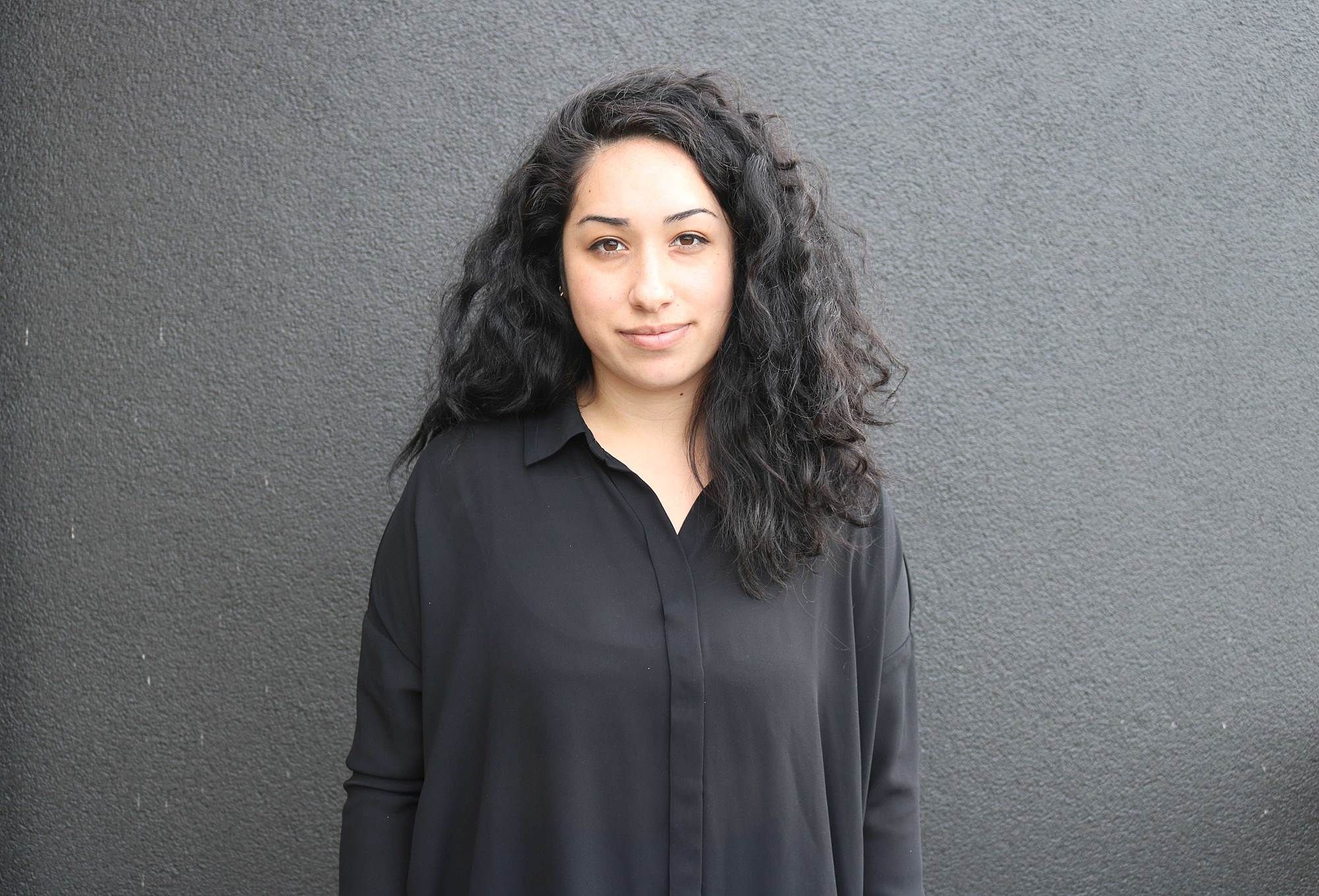A Breath of Fresh Air: A Review of 'One Thousand Ropes'
Lana Lopesi considers the contradictionary nature the anti-hero in Tusi Tamasese's latest film.
Lana Lopesi considers the contradictionary nature of the anti-hero in Tusi Tamasese’s latest film.
Sala was sleeping on the grass under the small shadow cast by the front of the bus. The bus was called Ellyana, named after my sister and I. The aitu took the hand brake off and the bus rolled over Sala’s foot.
*
Coming from a culture built on superstition, I grew up with aitu (the term loosely translates as spirits or ghosts). I was told that they are as real as the nose on your face. You can talk to aitu; you can see them; and, in my experience, they are mean, even demon-like. An aitu of this kind (played by Vaele Sima Urale) figures prominently in the dark drama One Thousand Ropes, written and directed by Tusi Tamasese. Massaged out of a woman’s womb, the aitu is one of many nuanced references to Samoan culture to be found in the film. The work couldn’t be any further from the typical Pacific comedy we have grown accustomed to seeing on the big screen (think 2006’s Sione’s Wedding or last year’s Three Wise Cousins).
Massaged out of a woman’s womb, the aitu is one of many nuanced references to Samoan culture to be found in the film.
Tamasese first reached critical acclaim with his 2011 feature film, The Orator O Le Tulafale. Like The Orator, One Thousand Ropes uses a Samoan cast and storyline, and most of the dialogue is in Samoan (two younger characters, Ilisa, played by Frankie Adams, and Debt, played by Beulah Koale, speak English). While the film includes a number of complex characters and relationships, the most prominent figure is an elderly anti-hero, Maea (Uelese Petaia). An unlikely midwife, he serves some of society’s most vulnerable pregnant women, who out of shame and secrecy (their own or their families’) are unable to seek typical medical care.
The film opens with Maea having completed a home delivery in suburban Wellington. The mother refuses to look at her baby, showing signs of the trauma she has gone though. She does not want the placenta for herself, so the old man takes it and buries it under a lemon tree outside his house, before getting ready for more of ‘his women’ to come over. He lays down a fala and an ie lavalava in his living room and waits. When a woman arrives, she lies down on her side. Maea gets his fanuʻu and starts to fofo her pregnant stomach.
The film centres on Maea’s redemption. Introduced to us as a healer and a carer, we quickly see hints of a more intricate character. The name Maea, which translates as rope, is an apt metaphor for the character’s multiplicity – a single cord made up of many different strands tightly intertwined. He is riddled with a past of domestic violence, which resulted in him losing his wife and children. We never see the actual violence take place, just the results of it: a lonely man in an empty house, a strained relationship with his children, scarred fists.
Tamasese uses a series of close up shots of Maea’s hands and an airy soundscape to make us consider the contradictory nature of the character and his relationship to both pain and healing. This is epitomised in the recurring image of Maea’s damaged hands caressing pregnant stomachs. The same hands are also used to pound dough. Maea ‘the baker’ has an aggressive kneading technique, which acts as a productive substitute for the violence he once inflicted on people.
Although I find it somewhat frustrating to see another connection made between Samoan culture and domestic violence, the film’s uncompromising focus on Samoan diaspora experience compensates for the cringe. It is rare to see such a serious depiction of this experience on a mainstream platform. Films like these allow audiences to see Pacific people outside the rugby-playing, Police Ten 7 archetype. This is of benefit not only to Palagi viewers, who are able to develop more complex understandings of the cultures of this part of the world, but also to Pacific people, who deserve to be able to access meaningful stories about themselves.
Like other recent films from Aotearoa, it testifies to a growing awareness in our culture of the need to address intersectionality and tell diverse, nuanced stories.
A trans-generational production, One Thousand Ropes is well written and very well acted. Watching it a week after giving birth no doubt intensified my reaction (I found the vivid labour imagery more harrowing than the actual horror scenes), but I’ve no doubt that the film is uncommonly powerful. It presents migrant experiences in ways that are accurate, exciting, and empowering, breathing new life into the age-old redemption narrative. Like other recent films from Aotearoa, it testifies to a growing awareness in our culture of the need to address intersectionality and tell diverse, nuanced stories. Tamasese has succeeded in producing a valuable work – one that speaks to us today, but is also bound to stand the test of time.
*
During my pregnancy, Sala would lay down the ie lavalava in the sitting room and would get out her fanuʻu. I lay on my side and she sat behind me, reaching over my body to fofo my stomach. I lost track of time during our sessions, but she would always keep going until she could no longer feel her feet. She would always finish by saying “ia”.



